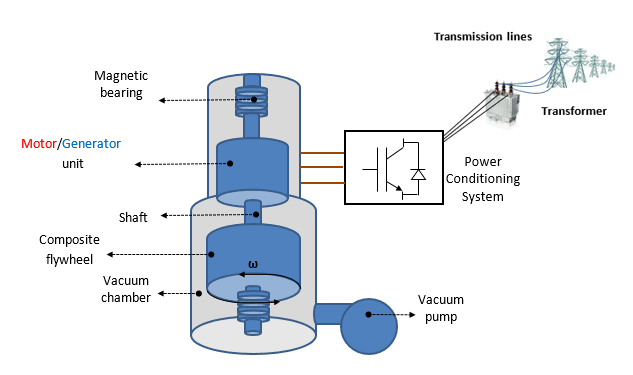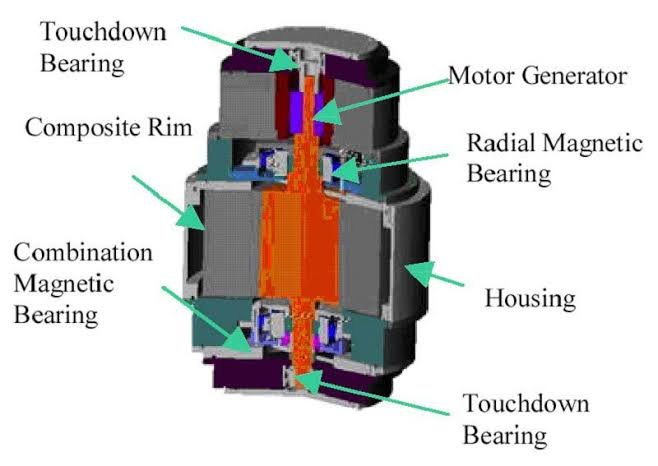Schematic diagram of flywheel energy storage system:
A flywheel energy storage system: (FESS) is a type of mechanical energy storage system that stores energy in the form of rotational kinetic energy. It consists of a high-speed rotating flywheel connected to an electric motor/generator.

Source★ https://rb.gy/3yvz2
The schematic diagram of a typical FESS is as follows:
Flywheel: The flywheel is the main component of the system, consisting of a rotor and a shaft. The rotor is a solid disk made of a high-strength material such as carbon fiber, with a low-friction bearing system to support it. The shaft is connected to the rotor and used to transmit the stored energy to the generator.
Motor/Generator: The motor/generator is a key component of the FESS, responsible for converting the stored kinetic energy of the flywheel to electrical energy and vice versa. During charging, the motor drives the flywheel to high speed, storing energy in the system. During discharge, the generator converts the kinetic energy of the spinning flywheel back into electrical energy.

Source★ https://rb.gy/jbc6k
Control System: The control system is responsible for regulating the charging and discharging of the FESS, ensuring that the system operates efficiently and safely. It includes sensors to monitor the speed and temperature of the flywheel, as well as a power electronics module to control the flow of energy in and out of the system.
Power Electronics Module: The power electronics module consists of various components such as inverters, rectifiers, and voltage regulators, used to manage the flow of electrical energy in and out of the FESS.

Source★ https://rb.gy/1ht5g
Cooling System: The cooling system is responsible for dissipating the heat generated during the charging and discharging of the FESS. It typically consists of a cooling fan and a heat exchanger to remove excess heat from the system.
Overall, the FESS is a highly efficient and reliable energy storage system, capable of delivering high power and energy densities with fast response times. It has a wide range of applications, including renewable energy integration, grid stabilization, and backup power
